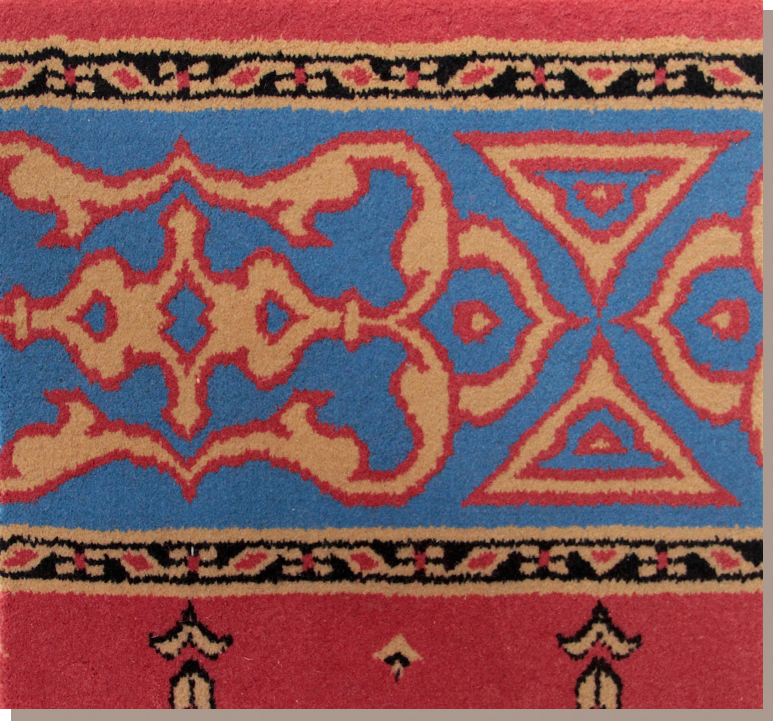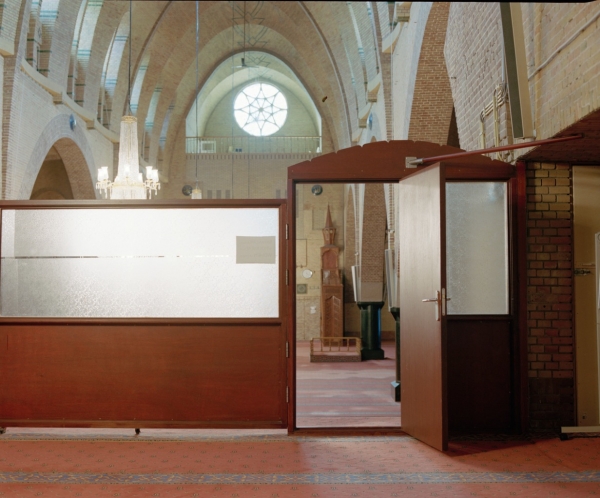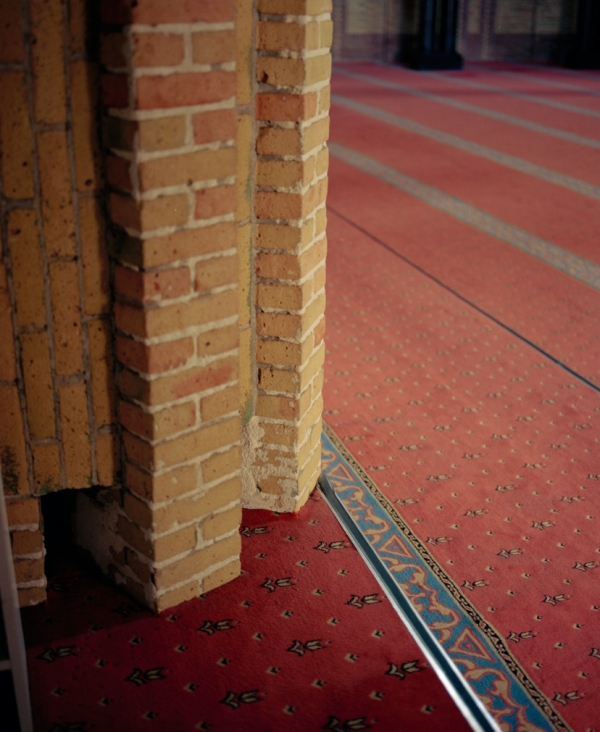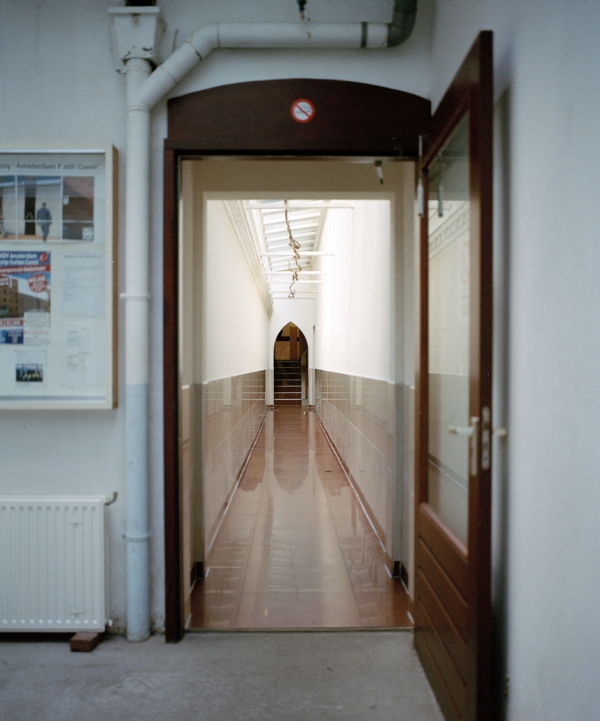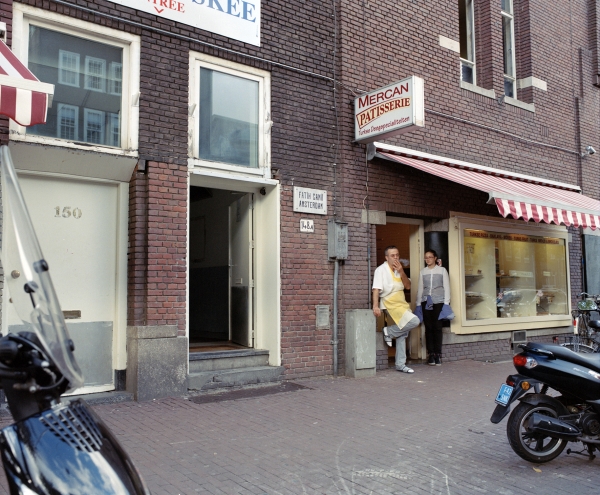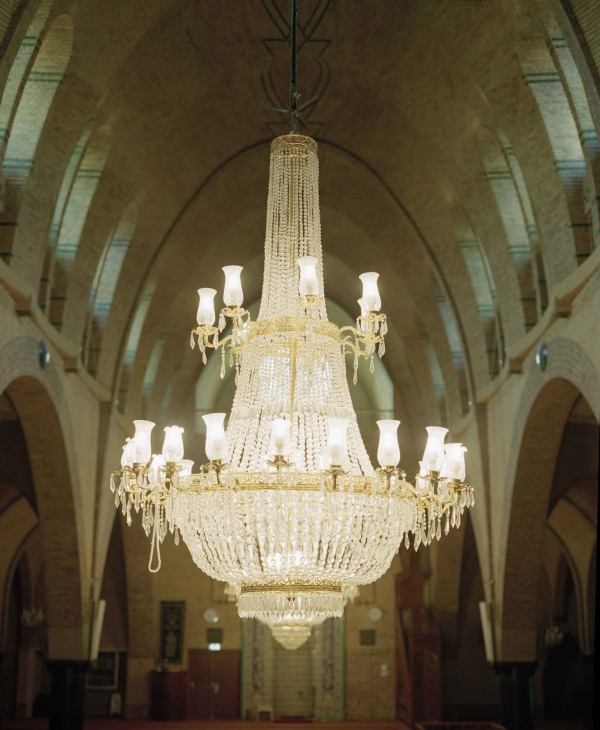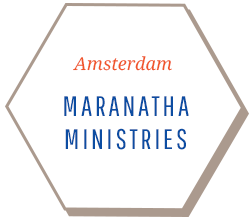A MOSQUE IN A CONVERTED CHURCH
In 2002, a chunk of stone from one of the towers of the former Catholic Church, The Sower, fell to the ground, right in the middle of a busy street. This accident served as a reminder to the Fatih mosque community – the new users of the building – that they needed to push ahead with the planned restoration work.
Since the Jesuits had left it in 1971, the building had suffered from neglect. The roof was leaking in several places, hundreds of pigeons were nesting under the roof and there was a risk that parts of the towers would collapse because of rotting woodwork.
The mosque board commissioned a large-scale restoration of the building, paid for with money the community and saved over the years and with contributions from the municipality, as well as rent from letting out parts of the mosque and the former vicarage.
The restoration project revived an ambition that had long been slumbering among some community members: to construct a more visible entrance for the mosque. When the church had first been converted, the former entrance had been closed and replaced by a prayer wall so that the Muslim community could pray towards Mecca. The mosque entrance has always been inconspicuous, just a small door next to the former church entrance that now makes room for shops. Encouraged by the architects, as well as local politicians and other visitors who felt the mosque should become more recognizable, the community began constructing a new entrance in 2015. This will allow the Fatih mosque to become visible as an important, and indeed the largest, mosque in Amsterdam.
This is a piece of the carpet that covers the floor of the prayer space of the Fatih Mosque. Custom-made in Turkey, it is part of the renovations at the mosque that have been underway for the last fifteen years.
The carpet represents the ambitions of the community to run a mosque that offers not only a familiar place of worship for its congregation, but also an aesthetically appealing and impressive space for Muslim and non-Muslim visitors alike.
TIMELINE FATIH MOSQUE
2001
2001 – 2016
The former church building was in a state of decay. The Fatih mosque community decided to renovate the building thoroughly. In 2001, it was listed as a monument by the City Council, and the roof and towers were restored. Today, the mosque community is constructing a new and more prominent entrance, intended to make the mosque more visible and recognisable from the street.
1981
1981
In 1981 the building was bought by a Turkish-Dutch community and converted into the “Fatih Mosque”. The conversion entailed one major transformation: the former church entrance was closed and replaced by a prayer wall, in order for the Muslim community to be able to pray in the direction of Mecca.
1971
1971
After an initial period during which the church flourished, its community declined steadily, particularly after the Second World War. As young families increasingly left the neighbourhood, the community became smaller. In 1971 it was decided to close the church. In subsequent years it was used as a carpet store and then a supermarket.
1929
1929
As more and more people were leaving the canal district where The Sower was located, it was decided to abandon the church on the Keizersgracht and to build a new one on the location of Saint Joseph’s Chapel on the Rozengracht. It was completed in 1929. This new building was designed by H.W. Valk and again took the name, The Sower. It was a monumental church building in traditional style.
1899
1899
Failure to pay the mortgage led the Social Democratic League to sell “Constantia”. It was bought by a Jesuit church community called “The Sower” (De Zaaier). Their original 17th century building was a clandestine or hidden church (schuilkerk) on the Keizersgracht, during the period of the Dutch Republic when Catholics were prohibited from meeting in publicly visible churches. The clandestine church was replaced by a purpose built church in 1837. The purchase of “Constantia” by the Jesuits dismayed the socialist owners of the building and it was only possible with the help of a middle man. The Jesuits converted the building, where – according to a Catholic newspaper – “until that time the devil had roamed and God had been so much defamed”. The new church was called Saint Joseph’s Chapel.
1890
1890
The socialist Social Democratic League (Sociaal-Democratische Bond) constructed a building at Rozengracht 152, in the Jordaan neighbourhood, to serve as their headquarters. They named it “Constantia”. The party’s leader Ferdinand Domela Nieuwenhuis, who had started his career as a Protestant preacher, used to give speeches there. Domela Nieuwenhuis was a charismatic speaker who was often attributed with messianic qualities by his supporters.

